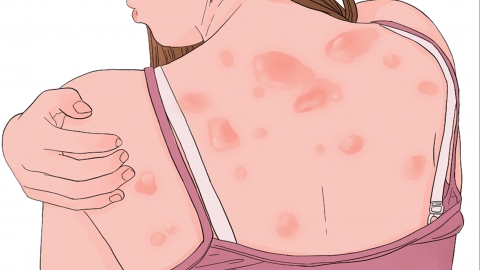What are the characteristic symptoms of urticaria in its early stage?
Generally, urticaria, as a common allergic skin disease, mainly presents initial symptoms including skin wheals, skin itching, morphological changes of wheals, duration of wheal episodes, and accompanying local edema. The specific analysis is as follows:

1. Skin Wheals: During the early stage of urticaria, skin wheals frequently appear. These wheals are typically raised red or pale white patches varying in size—from as small as a pinprick to large enough to cover extensive areas of skin. Wheals usually appear suddenly and can occur anywhere on the body, such as the trunk, limbs, and face.
2. Skin Itching: Accompanying the appearance of skin wheals is noticeable itching, which varies in intensity among individuals. Some may experience mild itchiness, while others may have severe itching that compels scratching. Scratching may enlarge the wheal size or increase their number, thereby worsening discomfort.
3. Morphological Changes of Wheals: The morphology of wheals may continuously change during the initial stage. When they first appear, they might be round or oval but may later merge into larger patches. Moreover, the location of the wheals may shift—for instance, wheals initially appearing on the legs may appear on the arms or other body parts after some time.
4. Duration of Wheal Episodes: In the early phase of urticaria, wheal episodes are relatively short-lived, typically resolving spontaneously within minutes to several hours and generally not lasting beyond 24 hours. After resolution, the skin surface does not leave any marks, although new wheals may repeatedly appear.
5. Accompanying Local Edema: Some patients may experience localized edema simultaneously with wheals, commonly affecting the eyelids, lips, hands, and feet. This表现为 swelling and tightness of the skin in these areas, without pitting upon pressure. Edema symptoms usually gradually subside along with the resolution of wheals.
In daily life, it is important to observe which substances one is allergic to, such as foods, medications, and pollen, and to avoid contact with allergens as much as possible. Additionally, maintaining clean skin and wearing loose, comfortable clothing can reduce skin irritation and help alleviate symptoms of urticaria.






